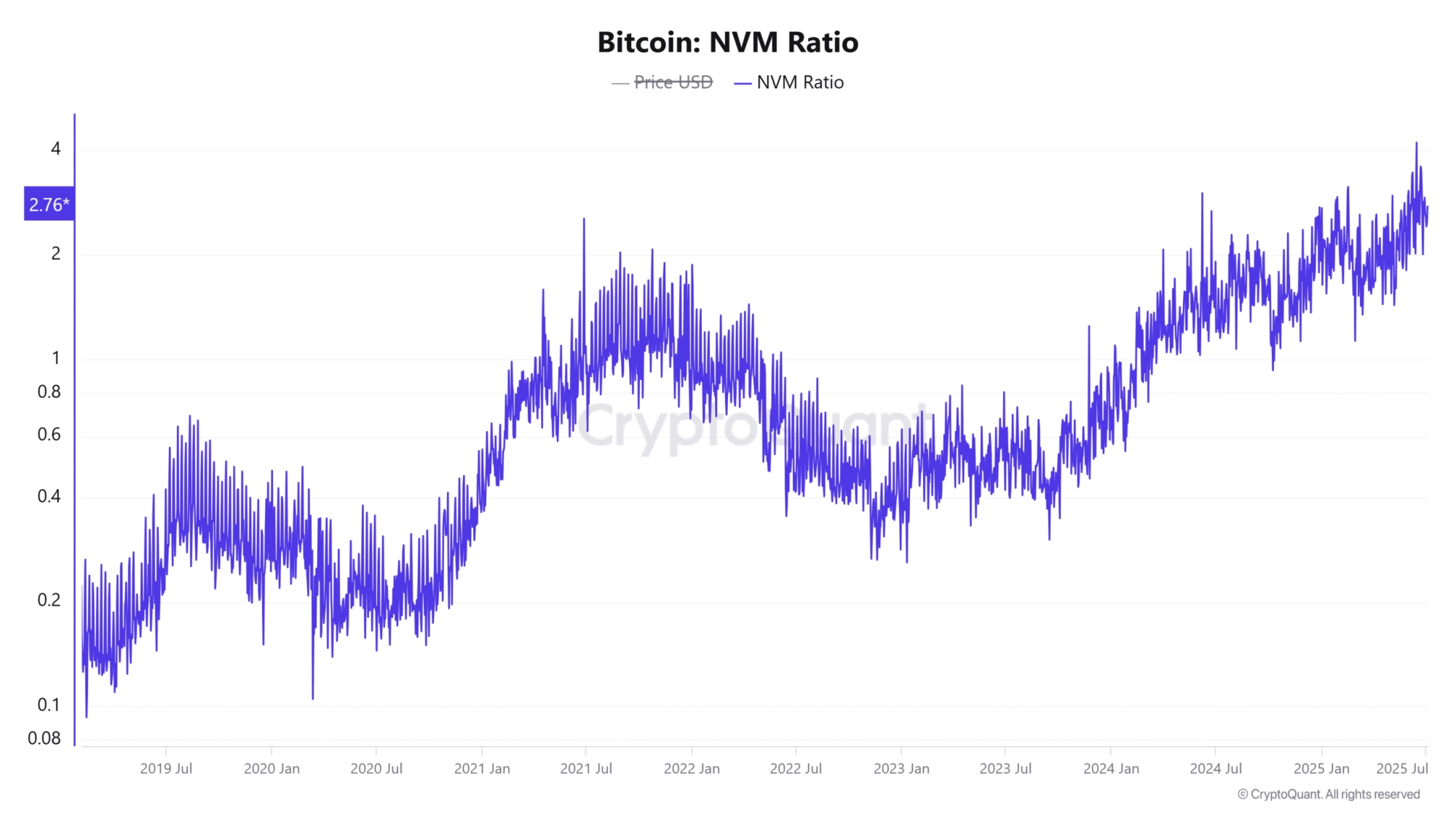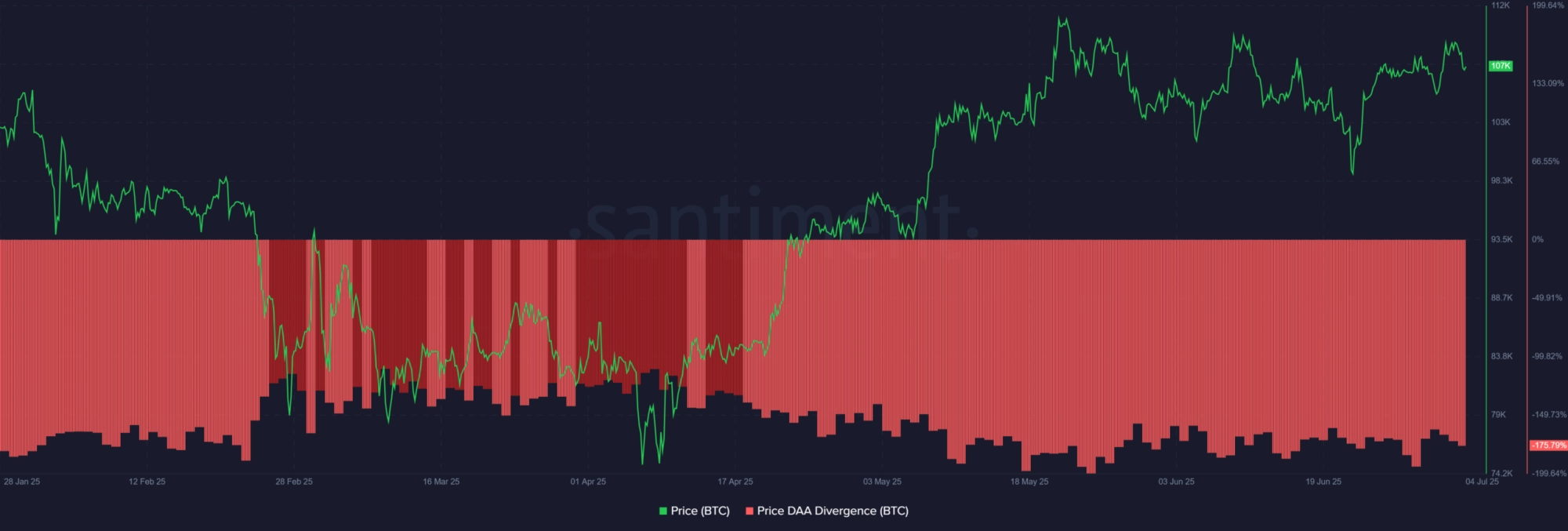- Exchange momentum, whale netflows, and valuation metrics reflect growing internal weakness despite strong prices.
- Network activity lags behind price action, risking a correction unless user participation improves.
Since early June, Bitcoins [BTC] exchange volume momentum has declined, with the 30-day average dropping to $5.9 billion, just 7% above the yearly average of $5.5 billion.
This narrowing premium signals reduced trader activity and shrinking speculative interest despite Bitcoins price stabilizing above $100K.
At the time of writing, Bitcoin traded at $108,259 after shedding 0.67% in 24 hours. Therefore, while prices remain firm, weakening volume momentum reflects growing caution among investors.
This divergence often precedes periods of lower volatility or correction, especially when traders hesitate to deploy new capital despite sustained price levels.

Source: X/Glassnode
Are whales losing confidence as exchange outflows dominate?
Despite momentary inflow spikes, the broader trend shows sustained negative netflows across centralized exchanges.
For instance, the 5th of July recorded a minor inflow of $25.64 million, yet the overall pattern continues to reflect dominant outflows.
These consistent withdrawals indicate large holders are moving assets into self-custody rather than preparing to sell. Historically, persistent outflows suggest accumulation or defensive posturing.
However, there are no strong inflows to offset the recent outflows. Exchange volume is also declining steadily. This suggests a fragile trading environment with thinning market depth.
As a result, the risk of sharp price swings in either direction is increasing.

Source: CoinGlass
BTC overvalued or just overheated: What does the NVM ratio say?
At press time, Bitcoins Network Value to Metcalfe (NVM) Ratio surged 14.14% to 2.76, signaling potential overvaluation based on network usage.
This metric, which compares market capitalization to user activity via Metcalfes Law, suggests that BTCs price might be outpacing on-chain fundamentals.
When NVM values rise while exchange momentum and activity slow, it typically indicates speculative premium buildup. Therefore, this spike in NVM Ratio under weak market activity raises red flags.
Although bulls continue to defend the $100K level, on-chain valuation signals suggest growing inefficiency and potential price vulnerability.

Source: CryptoQuant
Network weakness grows as price decouples from user activity
Notably, Santiment data revealed a deepening divergence between BTCs price and its Daily Active Addresses (DAA), with the divergence score sinking to -175.79%.
While the price has climbed steadily to $108K, active user growth has failed to keep pace. This long-lasting negative divergence points to weakening organic engagement, even as Bitcoin trends higher.
Moreover, network throughput is failing to confirm the rally, hinting that the current bullish structure may lack sustainable support.
If user participation continues to lag, it could limit upside momentum or trigger sharp corrections when sentiment shifts.

Source: Santiment
Can BTC sustain $100K without stronger on-chain support?
Bitcoin continues to trade above $100k, but mounting on-chain weaknesses are casting doubt on the sustainability of its rally.
Exchange momentum has slowed, suggesting reduced trading activity, while whale participation remains subdued, indicating a lack of strong accumulation from large holders.
At the same time, valuation metrics are flashing overbought signals, raising the risk of a potential correction.
Another concern is that user engagement has not kept pace with the rising price, hinting at an underlying structural weakness in the market.
Unless these core metrics show meaningful improvement, Bitcoin may struggle to hold its current levels.
Looking ahead, a renewed surge in network activity and broader investor participation will be essential to support the bullish narrative and drive further upside.




